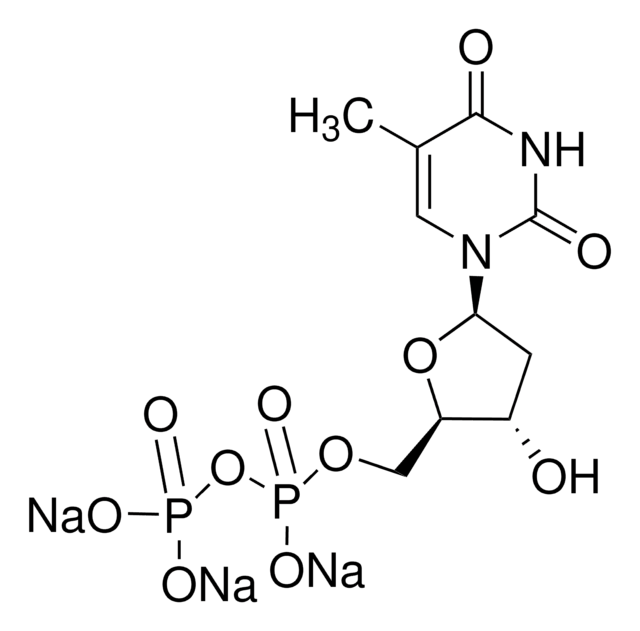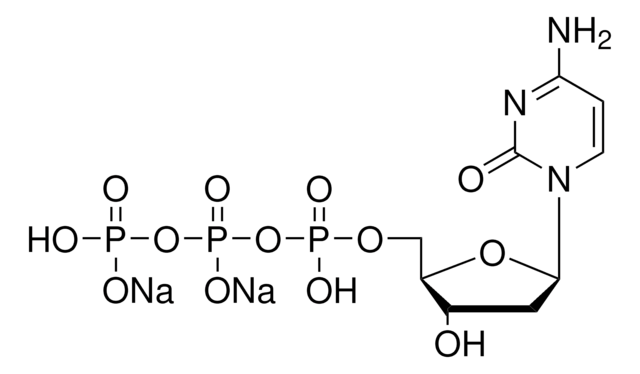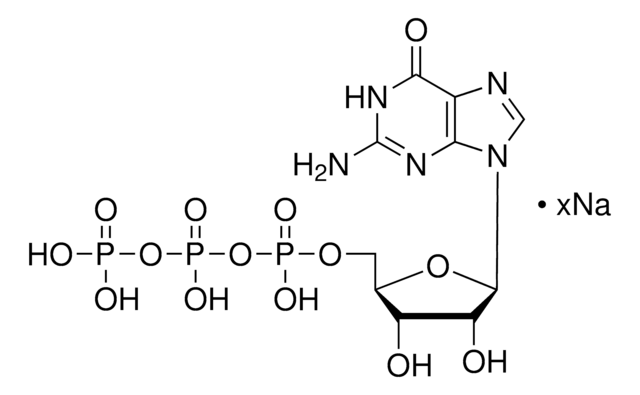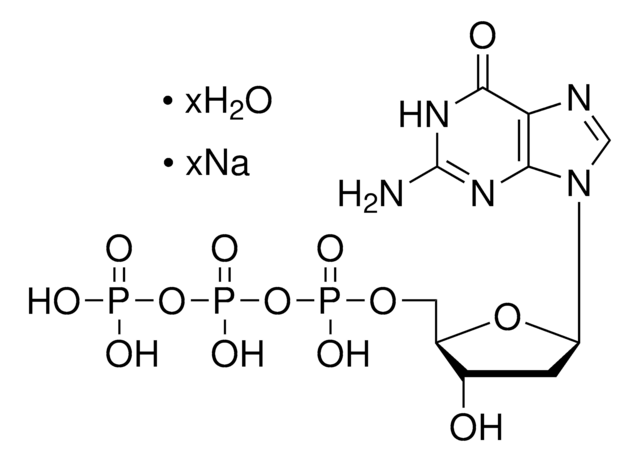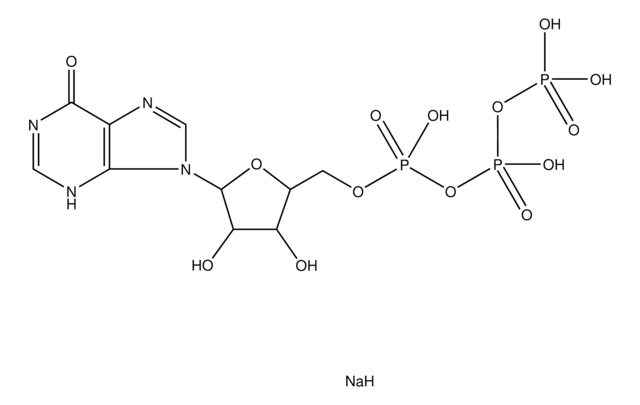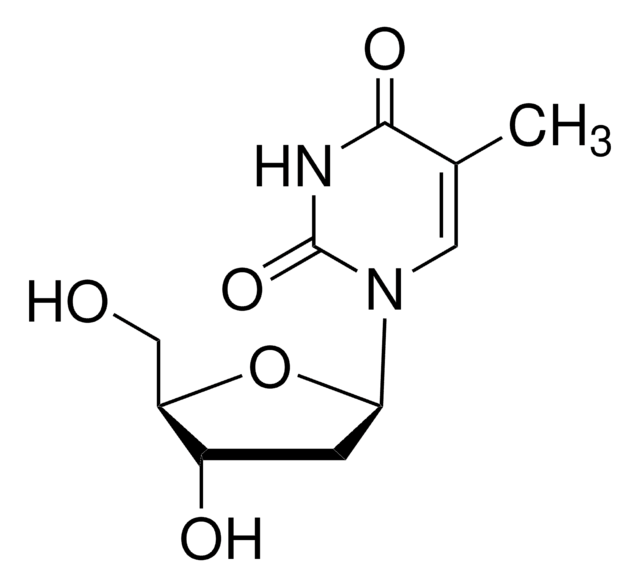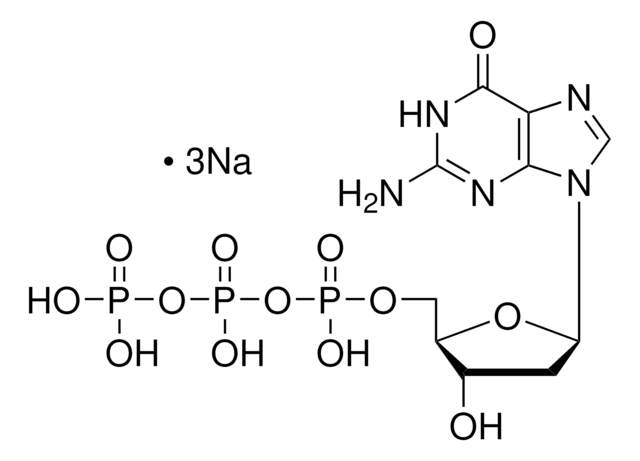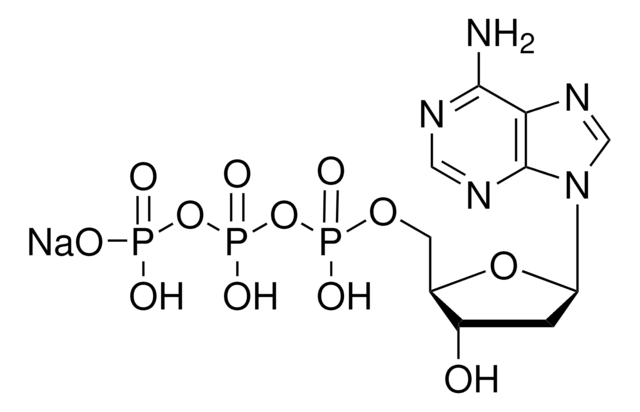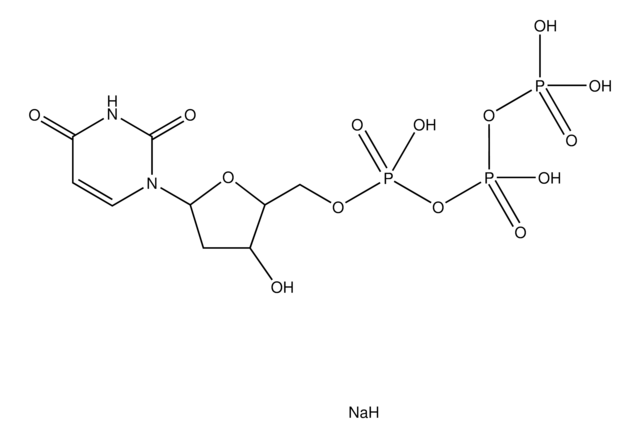T0251
Thymidine 5′-triphosphate sodium salt
≥96%
Synonym(s):
TTP, dTTP
About This Item
Recommended Products
Quality Level
Assay
≥96%
shipped in
dry ice
storage temp.
−20°C
InChI
1S/C10H17N2O14P3.Na.H/c1-5-3-12(10(15)11-9(5)14)8-2-6(13)7(24-8)4-23-28(19,20)26-29(21,22)25-27(16,17)18;;/h3,6-8,13H,2,4H2,1H3,(H,19,20)(H,21,22)(H,11,14,15)(H2,16,17,18);;
InChI key
KAELIXTVSANDSE-UHFFFAOYSA-N
Looking for similar products? Visit Product Comparison Guide
Related Categories
Application
- in the quenching ability test for dual-aptamer and multiple-nucleotide detection based on a multiple-aptamer/GO-nS complex
- to study protein-metabolite interactions in the central metabolism of Escherichia coli
- in a polymerase chain reaction (PCR) product formation using AM-toxin primers
Biochem/physiol Actions
Storage Class Code
11 - Combustible Solids
WGK
WGK 3
Flash Point(F)
Not applicable
Flash Point(C)
Not applicable
Certificates of Analysis (COA)
Search for Certificates of Analysis (COA) by entering the products Lot/Batch Number. Lot and Batch Numbers can be found on a product’s label following the words ‘Lot’ or ‘Batch’.
Already Own This Product?
Find documentation for the products that you have recently purchased in the Document Library.
Customers Also Viewed
Our team of scientists has experience in all areas of research including Life Science, Material Science, Chemical Synthesis, Chromatography, Analytical and many others.
Contact Technical Service